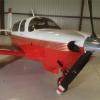Mooney tail aerodynamics - not backwards
-
Members Online
- Birdheadevo
- Hank
- Guillaume
- Mcstealth
- Parker_Woodruff
- Bike_rider
- Echo
- Joe Linnebur
- midlifeflyer
- bencpeters
- jlunseth
- MikeOH
- NickG
- TCC
- Flyler
- AndreiC
- Greg_D
- Rick Junkin
- PT20J
- Brian Vasseur
- 1980Mooney
- hammdo
- Paul Thomas
- flyboy0681
- navysix
- bluehighwayflyer
- Jake@BevanAviation
- sw1024
- Moondoggy
- Greg Ellis
- Marcopolo
- DonMuncy
- daytonabch04


Recommended Posts